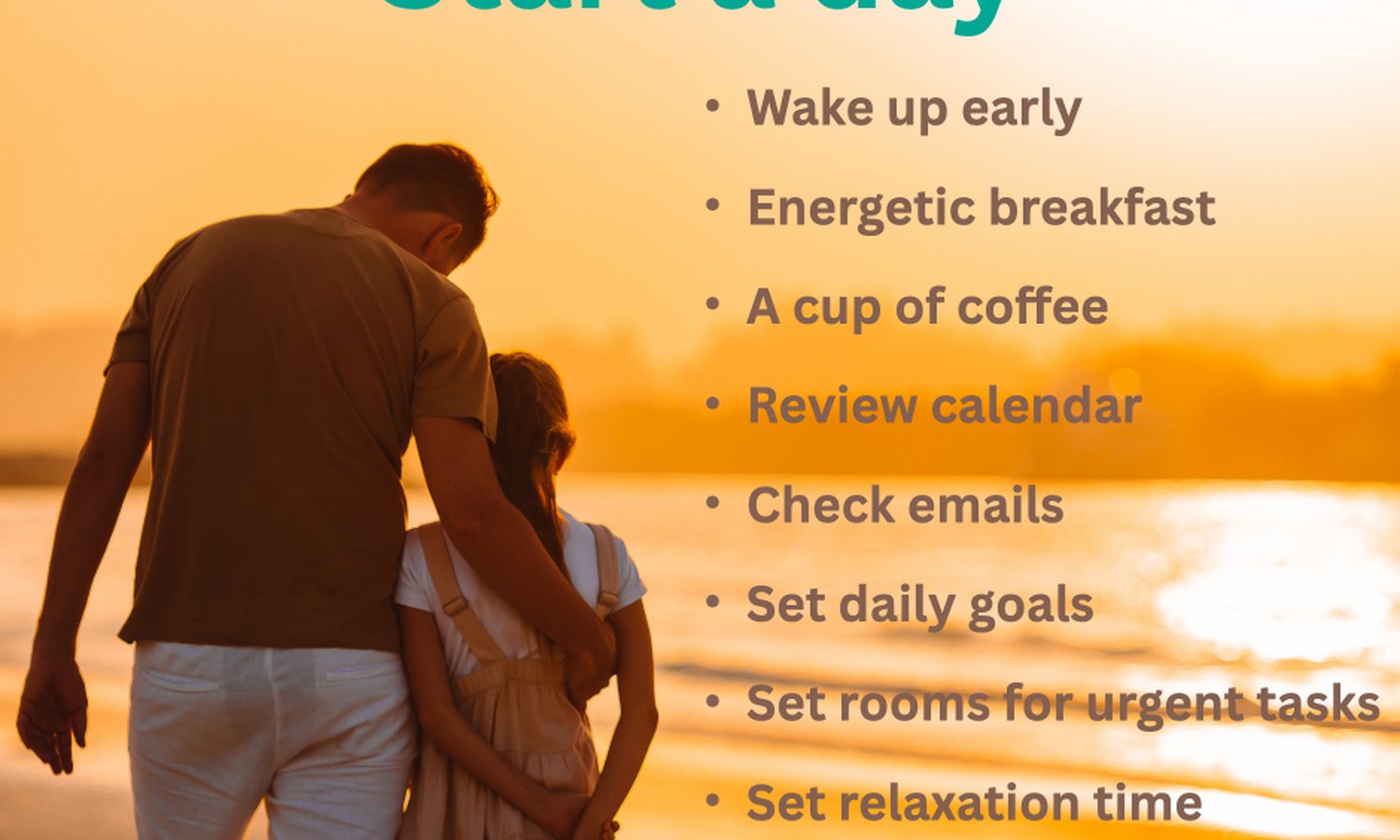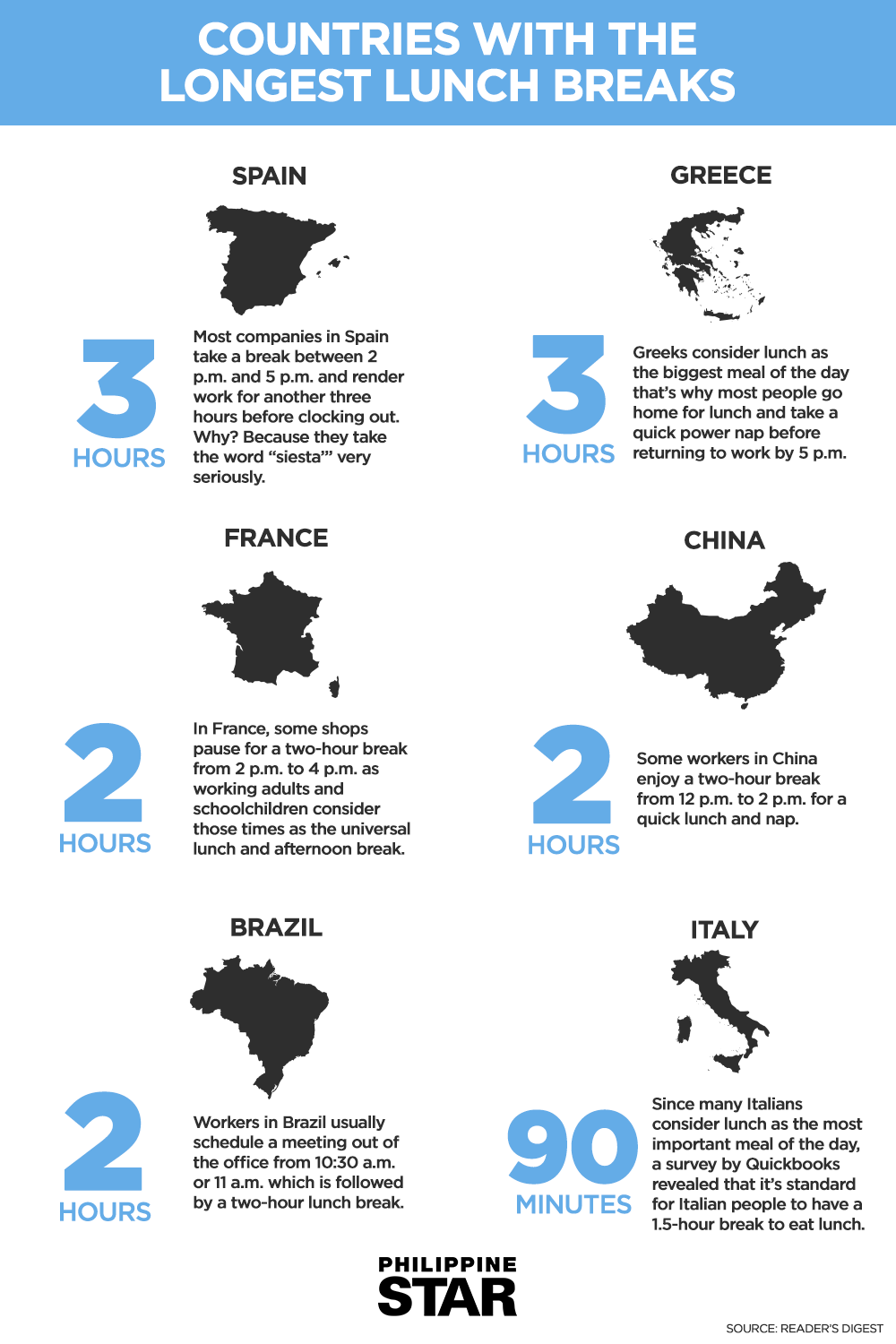Cách lập kế hoạch một ngày làm việc hiệu quả cho nhà phát triển
By JoeVu, at: 18:26 Ngày 22 tháng 10 năm 2023
Thời gian đọc ước tính: __READING_TIME__ phút


Mở đầu
Lập kế hoạch hiệu quả cho ngày làm việc của bạn là điều cần thiết đối với các nhà phát triển nhằm cân bằng năng suất với sự sáng tạo và giải quyết vấn đề. Là một nhà phát triển chuyên nghiệp với 14 năm kinh nghiệm làm việc với các công ty đa dạng trên toàn cầu — bao gồm cả ở Mỹ, Úc, Anh, Nhật Bản, Kenya, Áo và UAE - Tôi đã đưa ra các chiến lược giúp quản lý thời gian, tăng cường sự tập trung và tối đa hóa đầu ra, tất cả trong khi giữ cho căng thẳng ở mức độ thấp. Mặc dù có một sự nghiệp đòi hỏi khắt khe, tôi cũng quản lý để cân bằng các cam kết cá nhân:
- Nuôi dạy hai cô con gái
- Duy trì lối sống năng động với các hoạt động thể thao thường xuyên như quần vợt, bóng đá và các buổi tập gym (3-5 lần mỗi tuần).
- Nạp năng lượng bằng cách lên kế hoạch cho 3-4 chuyến du lịch mỗi năm.
Trong hướng dẫn này, chúng ta sẽ khám phá những chiến lược hiệu quả này, có thể giúp bạn đạt được một lối sống cân bằng và năng suất tương tự.
Hiểu rõ vai trò của bạn
Biết được các yêu cầu cụ thể của vai trò của bạn là điều then chốt để lập kế hoạch ngày hiệu quả. Lấy ví dụ, vai trò của một nhà phát triển cốt lõi. Một nhà phát triển cốt lõi phải:
-
Hiểu rõ tổng quan dự án: Điều này bao gồm sự hiểu biết thấu đáo về các tính năng, mục tiêu và tầm nhìn dài hạn của dự án. Điều quan trọng là phải hiểu cách các nhiệm vụ của bạn phù hợp với các mục tiêu lớn hơn của dự án.
-
Hiểu rõ kế hoạch hàng tuần: Làm quen với các mục tiêu của tuần, bao gồm danh sách chi tiết các vấn đề cần giải quyết hàng ngày hoặc hàng tuần. Điều này giúp thiết lập mục tiêu hàng ngày thực tế và sắp xếp khối lượng công việc hiệu quả.
-
Hợp tác với các thành viên trong nhóm: Biết cách cộng tác hiệu quả với các nhà phát triển, nhà thiết kế và các bên liên quan khác của dự án là điều cần thiết. Điều này bao gồm giao tiếp thường xuyên và chia sẻ tài nguyên và kiến thức để tăng cường sự hợp tác nhóm.
-
Hỗ trợ công việc của lãnh đạo/người quản lý: Hỗ trợ các lãnh đạo nhóm và người quản lý bằng cách cung cấp thông tin cập nhật rõ ràng, dự đoán nhu cầu của dự án và đóng góp vào việc lập kế hoạch chiến lược. Cách tiếp cận chủ động của bạn có thể sắp xếp hợp lý đáng kể việc thực hiện dự án.
-
Giải quyết xung đột: Hoạt động như người trung gian để giải quyết xung đột giữa các thành viên trong nhóm và các nhóm khác. Một nhà phát triển cốt lõi thường nắm bắt được sự hiểu biết toàn diện về động lực của dự án, làm cho họ ở vị trí lý tưởng để đề xuất các thỏa hiệp và giải pháp giúp dự án đi đúng hướng.
-
Hỗ trợ các nhà phát triển trẻ: Giúp các nhà phát triển trẻ phát triển bằng cách hướng dẫn họ thông qua những phức tạp của dự án, đưa ra lời khuyên và chia sẻ kinh nghiệm có thể đẩy nhanh sự phát triển chuyên nghiệp của họ.
-
Quản lý tài liệu: Giữ tất cả tài liệu dự án được cập nhật. Điều này không chỉ giúp duy trì sự liên tục của dự án mà còn đảm bảo rằng các thành viên mới trong nhóm có thể nhanh chóng bắt kịp.
-
Viết các bài kiểm tra: Thường xuyên viết các bài kiểm tra đơn vị, tích hợp và kiểm tra căng thẳng. Việc kiểm tra này rất quan trọng để duy trì chất lượng và độ tin cậy của phần mềm, ngăn ngừa lỗi trong tương lai và đảm bảo rằng hệ thống có thể xử lý các căng thẳng trong thế giới thực.
Bộ công cụ của nhà phát triển
Một bộ công cụ được trang bị đầy đủ là rất quan trọng đối với bất kỳ nhà phát triển nào hướng tới hiệu quả và năng suất. Dưới đây là một số thành phần thiết yếu của bộ công cụ của nhà phát triển:
- Môi trường phát triển tích hợp (IDE): Chọn một IDE phù hợp nhất với các ngôn ngữ lập trình và khung công tác mà bạn sử dụng, chẳng hạn như Visual Studio Code, IntelliJ IDEA hoặc Eclipse.
- Hệ thống quản lý phiên bản: Các công cụ như Git giúp quản lý các thay đổi đối với cơ sở mã của bạn, tạo điều kiện thuận lợi cho việc cộng tác và theo dõi phiên bản.
- Cơ sở dữ liệu: Sự quen thuộc với các cơ sở dữ liệu có liên quan, cho dù dựa trên SQL như PostgreSQL và MySQL hay NoSQL như MongoDB, là điều cần thiết.
- Công cụ gỡ lỗi: Các công cụ có thể giúp bạn theo dõi và sửa lỗi hiệu quả là không thể thiếu.
- Công cụ kiểm tra API: Các công cụ như Postman hoặc Swagger để kiểm tra và tương tác với API.
- Công cụ giao tiếp: Các nền tảng như Slack hoặc Microsoft Teams rất quan trọng để giữ liên lạc với nhóm của bạn.
- Tài khoản AI: Github Copilot, ChatGPT, Gemini, PerPlexity và nhiều công cụ khác là trợ lý không chỉ dành cho các nhà phát triển mà còn cho mọi người để hỗ trợ các công việc thủ công
Thiết lập không gian làm việc của bạn
Tạo một không gian làm việc tối ưu là chìa khóa để duy trì năng suất và sức khỏe trong nhiều giờ lập trình:
- Bàn làm việc ngăn nắp: Giữ cho không gian làm việc của bạn không lộn xộn để giảm thiểu sự phân tâm và sự lộn xộn tinh thần. Bạn sẽ dành 8 giờ làm việc, 1/3 cuộc đời của bạn. Hãy làm cho nó thoải mái và dễ tập trung.
- Ánh sáng phù hợp: Ánh sáng tốt rất quan trọng để giảm mỏi mắt. Ánh sáng tự nhiên là lý tưởng, nhưng nếu không có sẵn, hãy đảm bảo có ánh sáng nhân tạo mềm mại và đầy đủ.
- Môi trường yên tĩnh: Đảm bảo không gian làm việc của bạn không bị phân tâm. Nếu tiếng ồn không thể tránh được, hãy cân nhắc sử dụng tai nghe chống ồn. Không cần phải có một khung cảnh tuyệt vời nhưng khung cảnh nên đẹp và tươi mới.
- Nội thất công thái học: Đầu tư vào ghế và bàn làm việc công thái học để hỗ trợ tư thế và giảm nguy cơ bị căng thẳng hoặc chấn thương.
- Nhiều màn hình: Sử dụng màn hình kép để mở rộng không gian làm việc kỹ thuật số của bạn, cho phép xử lý mã và tài liệu hiệu quả hơn. Một lần nữa, điều này không phải là bắt buộc.
Thói quen buổi sáng
Tôi thường bắt đầu ngày mới ở phòng tập thể dục (chạy bộ, đi bộ, tập thể dục, bơi lội), khoảng 6-7 giờ sáng. Sau đó đánh thức các con gái và đưa chúng đến trường. Trở về nhà và ăn sáng với vợ. Tôi bắt đầu công việc của mình vào khoảng 8:15 sáng.
Một thói quen buổi sáng có cấu trúc đặt ra giai điệu cho một ngày làm việc hiệu quả. Dưới đây là cách bạn có thể tối ưu hóa buổi sáng của mình:
Xem lại lịch của bạn
Bắt đầu ngày mới bằng cách xem lại lịch trình, thời gian biểu dự án, các trở ngại. Vì mọi thứ thay đổi thường xuyên, chủ sở hữu có những ý tưởng mới mà họ muốn hoàn thành ngay lập tức. Điều này giúp bạn dự đoán và chuẩn bị cho các cuộc họp, hiểu rõ các hạn chót và lên kế hoạch thời gian cộng tác hiệu quả. Nhận thức được cấu trúc của ngày của bạn cho phép bạn chuẩn bị tinh thần cho các nhiệm vụ phía trước.
Tôi thường dành 30 phút đầu tiên để liệt kê tất cả các dự án mà tôi đang thực hiện, tự đánh giá và lên kế hoạch cho các bước tiếp theo. Vì tôi thường để các ứng dụng và ghi chú mở vào cuối ngày, nên mỗi buổi sáng tôi có thể dễ dàng kiểm tra lại chúng.
Đặt mục tiêu hàng ngày/hàng tuần
Sau khi hiểu rõ lịch trình của mình, hãy đặt ra các mục tiêu rõ ràng và có thể đạt được cho ngày hôm đó. Vào thứ Hai, kế hoạch cả tuần cũng nên được thiết kế sơ bộ. Ưu tiên các nhiệm vụ của bạn dựa trên tính cấp bách và tầm quan trọng của chúng. Điều này giúp sắp xếp hợp lý sự tập trung của bạn và phân bổ hiệu quả nỗ lực của bạn trong suốt cả ngày.
Các mục tiêu phải cụ thể, càng chi tiết càng tốt. Chúng phải dễ dàng ước tính.
Kỹ thuật phân bổ thời gian
Áp dụng kỹ thuật phân bổ thời gian để quản lý ngày của bạn hiệu quả. Phân bổ các giờ cụ thể trong ngày cho các loại công việc khác nhau, chẳng hạn như lập trình, họp và thảo luận ý tưởng. Điều này giảm thiểu việc chuyển đổi ngữ cảnh và tối đa hóa năng suất trong các giai đoạn làm việc chuyên sâu. Thiết lập lời nhắc là một chiến lược tốt, ví dụ: Lời nhắc của Slack là một lựa chọn tốt.
Xử lý sự gián đoạn và phân tâm
Giảm thiểu sự gián đoạn bằng cách thiết lập ranh giới và thời gian cụ thể để kiểm tra email và tin nhắn. Thông báo cho nhóm của bạn về thời gian bạn có mặt và cân nhắc sử dụng các công cụ như chế độ "Không làm phiền" hoặc tai nghe chống ồn để duy trì sự tập trung.
Đừng để người khác làm gián đoạn bạn trong các nhiệm vụ quan trọng, ví dụ: gặp gỡ khách hàng, các nhiệm vụ tập trung hoặc các nhiệm vụ khó khăn.
Kỹ thuật Pomodoro
Để duy trì mức độ tập trung cao và tránh kiệt sức, hãy sử dụng Kỹ thuật Pomodoro. Làm việc với các đợt tập trung 25 phút, tiếp theo là nghỉ giải lao 5 phút. Phương pháp này giúp duy trì sự nhanh nhẹn về tinh thần và ngăn ngừa mệt mỏi bằng cách đảm bảo các lần nghỉ ngắn thường xuyên.
Lúc đầu, kỹ thuật này dường như chỉ dành cho các nhiệm vụ NHỎ, chúng ta phải làm gì với các nhiệm vụ KHỔNG LỒ? Hãy nhớ chiến lược "chia để trị" . Mỗi nhiệm vụ có thể được chia thành nhiều phần nhỏ hơn, mỗi phần phải dễ dàng và có thể được thực hiện trong 15 phút hoặc 25 phút. Nếu bạn gặp vấn đề với kỹ thuật này, điều đó có nghĩa là bạn gặp vấn đề với kỹ năng giải quyết vấn đề của mình.
Ăn trưa và nghỉ giải lao
Nghỉ giải lao thường xuyên rất quan trọng đối với sức khỏe tinh thần và thể chất. Sử dụng thời gian này để tách khỏi công việc, điều này có thể dẫn đến năng suất cao hơn và sức khỏe tốt hơn.

Châu Âu
- Tây Ban Nha: Được biết đến với "siesta," Tây Ban Nha truyền thống có giờ nghỉ trưa dài hơn có thể kéo dài tới hai giờ, thường là từ 2:00 chiều đến 4:00 chiều. Nhiều công nhân về nhà ăn trưa với gia đình và thậm chí còn ngủ trưa ngắn.
- Pháp: Giờ nghỉ trưa là một phần được trân trọng trong ngày, thường kéo dài ít nhất một giờ trở lên, thường là từ 12:00 trưa đến 2:00 chiều. Thường thì công nhân rời văn phòng để thưởng thức một bữa ăn thoải mái tại một quán cà phê hoặc nhà hàng gần đó.
- Đức: Giờ nghỉ trưa thường mang tính thực tế và hiệu quả, kéo dài khoảng 30 đến 60 phút. Công nhân có thể ăn ở căng tin văn phòng hoặc các quán ăn gần đó.
Châu Á
- Nhật Bản: Giờ nghỉ trưa thường khoảng một giờ, bắt đầu từ 12:00 trưa. Nhiều nhân viên ăn hộp cơm bento ở phòng ăn hoặc tại bàn làm việc của họ, được gọi là "ăn trưa tại bàn" hoặc "shokuiku".
- Việt Nam: Thông thường, giờ nghỉ trưa kéo dài từ 12:00 trưa đến 1:30 chiều, nhiều công nhân ngủ trưa ngắn sau đó, điều này được chấp nhận về mặt văn hóa và thậm chí được khuyến khích trong một số doanh nghiệp.
- Ấn Độ: Giờ nghỉ trưa có thể thay đổi, nhưng thường khoảng một giờ, bắt đầu khoảng 1:00 chiều. Nhiều công nhân mang đồ ăn nấu tại nhà để chia sẻ với đồng nghiệp.
Bắc Mỹ
- Hoa Kỳ: Giờ nghỉ trưa thường ngắn, thường từ 30 phút đến một giờ, bắt đầu khoảng 12:00 trưa. Nhiều công nhân ăn ở bàn làm việc của họ hoặc ăn nhanh ở một nhà hàng gần đó.
- Canada: Tương tự như Hoa Kỳ, giờ nghỉ trưa thường khoảng một giờ. Trong nhiều bối cảnh chuyên nghiệp, ăn trưa tại bàn làm việc là khá phổ biến, mặc dù một số người có thể ra ngoài ăn nhanh.
Nam Mỹ
- Brazil: Bữa trưa là một bữa ăn quan trọng trong ngày, giờ nghỉ thường kéo dài khoảng một đến hai giờ. Nhiều người Brazil về nhà ăn với gia đình.
- Argentina: Giờ nghỉ trưa cũng rất quan trọng, thường kéo dài tới hai giờ. Đó là thời gian cho một bữa ăn đáng kể, đôi khi theo sau là một giấc ngủ ngắn.
Châu Phi
- Nigeria: Giờ nghỉ trưa thường khoảng một giờ nhưng có thể kéo dài tùy thuộc vào bản chất của môi trường làm việc. Nhiều công nhân thưởng thức những bữa ăn thịnh soạn phản ánh ẩm thực địa phương.
- Nam Phi: Giờ nghỉ trưa thường là một giờ, nhiều công nhân sử dụng thời gian này để ăn ở các quán ăn trong công ty hoặc các quán ăn gần đó.
Úc
- Úc: Giờ nghỉ trưa thường khoảng một giờ, bắt đầu khoảng 12:00 trưa. Thường thì nhân viên rời văn phòng để ăn ở các quán cà phê hoặc công viên địa phương, đặc biệt là ở các khu vực thành thị.
Kiểm tra giữa ngày
Khoảng giữa trưa, hãy dành chút thời gian để đánh giá tiến độ của các nhiệm vụ trong ngày. Việc kiểm tra này rất quan trọng để đánh giá cách ngày của bạn đang diễn ra và điều chỉnh kế hoạch nếu cần. Tôi thường làm điều này vào khoảng 3 giờ chiều hoặc 4 giờ chiều. Hãy xem xét những điều sau:
- Xem xét các nhiệm vụ đã hoàn thành: Nhanh chóng đánh giá những gì bạn đã hoàn thành cho đến nay và xem liệu nó có phù hợp với mục tiêu buổi sáng của bạn không.
- Điều chỉnh mức độ ưu tiên: Nếu một số nhiệm vụ mất nhiều thời gian hơn dự kiến hoặc nếu có những ưu tiên mới xuất hiện, hãy sắp xếp lại lịch trình buổi chiều của bạn cho phù hợp.
- Chuẩn bị cho các hoạt động buổi chiều: Đảm bảo bạn đã sẵn sàng cho bất kỳ cuộc họp, buổi làm việc chung hoặc các giai đoạn làm việc chuyên sâu nào được lên lịch vào buổi chiều.
Việc đánh giá giữa ngày này giúp bạn luôn đi đúng hướng và sử dụng thời gian hiệu quả cho phần còn lại của ngày.
Đối phó với sự trì hoãn
Sự trì hoãn có thể cản trở năng suất, nhưng có những cách hiệu quả để khắc phục nó:
- Chia các nhiệm vụ thành các bước nhỏ hơn: Các nhiệm vụ lớn có vẻ khó khăn, áp đảo và khó khăn. Việc chia nhỏ chúng thành các bước nhỏ có thể giảm bớt sự áp đảo và làm cho việc bắt đầu dễ dàng hơn. Phần nhỏ nhất nên được thực hiện trong 15-30 phút.
- Đặt ra các hạn chót nhỏ: Đối với mỗi bước nhỏ, hãy thiết lập một hạn chót nhỏ. Điều này tạo ra cảm giác cấp bách và giúp duy trì đà tiến triển.
- Giảm thiểu sự phân tâm: Xác định và giảm thiểu sự phân tâm. Điều này có thể liên quan đến việc sử dụng các ứng dụng để chặn các trang web gây mất tập trung hoặc đặt điện thoại của bạn ở chế độ "Không làm phiền" trong thời gian làm việc tập trung.
- Sử dụng các kỹ thuật thúc đẩy: Nhắc nhở bản thân về những lợi ích của việc hoàn thành nhiệm vụ hoặc thiết lập một hệ thống phần thưởng khi bạn đạt được mục tiêu của mình.
Mark Twain nói "Đừng bao giờ trì hoãn đến ngày mai những việc có thể làm vào ngày kia cũng được."
Thói quen buổi tối
Một thói quen buổi tối hiệu quả rất quan trọng để thư giãn sau một ngày làm việc và chuẩn bị cho ngày hôm sau. Bạn không cần dành cả đêm để làm việc này, 30 phút hoặc 1 giờ là đủ. Bạn có thể làm điều đó khi con bạn đang học, điều này không chỉ giúp bạn dạy con về một thói quen tốt mà còn cho chúng biết rằng chúng không cô đơn, cả gia đình đều đang cùng nhau học hỏi/thu nhận kiến thức.
Dưới đây là cách bạn có thể tối ưu hóa thói quen buổi tối của mình để mang lại lợi ích tối đa cho cá nhân và chuyên nghiệp:
Suy ngẫm về ngày hôm đó
Hãy dành thời gian mỗi tối để suy ngẫm về những gì bạn đã hoàn thành và những lĩnh vực nào cần cải thiện. Điều này có thể liên quan đến một buổi ghi nhật ký ngắn gọn, trong đó bạn liệt kê các nhiệm vụ đã hoàn thành và bất kỳ thách thức nào bạn gặp phải. Sự suy ngẫm này không chỉ mang lại cảm giác trọn vẹn cho ngày hôm đó mà còn giúp xác định các lĩnh vực để phát triển cá nhân và chuyên nghiệp liên tục.
Lên kế hoạch cho ngày mai
Lên kế hoạch cho các nhiệm vụ của bạn cho ngày hôm sau giúp ích theo nhiều cách. Nó không chỉ tiết kiệm thời gian vào buổi sáng hôm sau, cho phép bạn bắt đầu ngày mới với một chương trình nghị sự rõ ràng mà còn giúp bạn chuẩn bị tinh thần cho các nhiệm vụ sắp tới. Sự chuẩn bị này có thể giúp bạn dễ dàng bắt đầu ngày mới một cách năng suất, vì bạn đã lập ra các ưu tiên của mình và có thể bắt đầu công việc ngay lập tức.
Sử dụng công nghệ để giữ sự ngăn nắp
Sử dụng công nghệ để giữ cho các nhiệm vụ và lịch trình của bạn được sắp xếp. Các công cụ như trình quản lý tác vụ (ví dụ: Asana, Trello), lịch (ví dụ: Google Calendar) và các ứng dụng nhắc nhở có thể tăng cường đáng kể khả năng theo dõi trách nhiệm và hạn chót của bạn. Các công cụ này cũng có thể giúp lập kế hoạch hiệu quả cho các ngày và tuần của bạn, đảm bảo bạn luôn biết về các cam kết sắp tới và có thể chuẩn bị cho phù hợp.
Giữ động lực
Duy trì động lực đôi khi có thể khó khăn, đặc biệt là sau một ngày dài. Hãy đặt ra những mục tiêu rõ ràng, có thể đạt được và tự thưởng cho bản thân khi đạt được các cột mốc. Điều này có thể đơn giản như tự thưởng cho mình một bữa ăn yêu thích, tận hưởng một hoạt động giải trí hoặc dành thời gian nghỉ ngơi cho các hoạt động cá nhân. Nhận ra và ăn mừng thành tích có thể làm mới sự nhiệt tình và động lực của bạn đối với công việc.
Thưởng thức một tách trà đen hoặc trà lá (Cúc hoa) và đọc một chương sách.
Kết luận
Việc lập kế hoạch ngày hiệu quả không chỉ đơn thuần là một lịch trình; đó là về việc tạo ra một thói quen cân bằng phù hợp với mục tiêu cá nhân và chuyên nghiệp của bạn, cho phép bạn trở thành nhà phát triển giỏi nhất có thể.
Lấy giấy ra và lập kế hoạch cho ngày của bạn ngay bây giờ, đừng trì hoãn nữa!!!
Câu hỏi thường gặp
1. Kỹ thuật quản lý thời gian tốt nhất cho các nhà phát triển là gì?
Một trong những kỹ thuật quản lý thời gian hiệu quả nhất cho các nhà phát triển là Kỹ thuật Pomodoro. Nó liên quan đến việc làm việc với các đợt tập trung 25 phút, tiếp theo là nghỉ giải lao 5 phút. Phương pháp này giúp duy trì năng suất cao và sự nhanh nhẹn về tinh thần trong suốt cả ngày. Ngoài ra, việc phân bổ thời gian có thể rất hiệu quả, cho phép bạn phân bổ các phần cụ thể trong ngày cho các nhiệm vụ khác nhau, do đó giảm thiểu sự phân tâm và tối đa hóa hiệu quả.
2. Tôi nên nghỉ giải lao thường xuyên như thế nào để duy trì năng suất?
Nghỉ giải lao thường xuyên rất quan trọng để duy trì năng suất và tránh kiệt sức. Nói chung, bạn nên nghỉ giải lao ngắn từ 5 đến 10 phút mỗi giờ. Đối với các khoảng thời gian làm việc dài hơn, nghỉ giải lao từ 15 đến 30 phút sau mỗi hai giờ làm việc có thể có lợi. Những lần nghỉ này giúp làm mới tâm trí của bạn, giảm mỏi mắt và giữ cho bạn tràn đầy năng lượng trong suốt cả ngày.
3. Những công cụ nào có thể giúp tôi giữ sự ngăn nắp?
Một số công cụ có thể giúp các nhà phát triển giữ sự ngăn nắp:
- Quản lý tác vụ: Các công cụ như Trello, Asana và Jira cho phép bạn quản lý dự án, theo dõi tiến độ và cộng tác với các thành viên trong nhóm.
- Lịch: Google Calendar hoặc Outlook có thể giúp bạn lên lịch và hình dung các hạn chót và cuộc họp của bạn.
- Ghi chú: Các ứng dụng như Evernote, Microsoft OneNote và Notion rất tuyệt vời để sắp xếp suy nghĩ, ghi chú cuộc họp và nhiệm vụ của bạn.
- Ứng dụng nhắc nhở: Todoist và Any.do có thể giúp bạn theo dõi các nhiệm vụ và hạn chót hàng ngày của mình.
4. Làm thế nào để tôi xử lý những ngày tràn ngập các cuộc họp và ít lập trình?
Vào những ngày có nhiều cuộc họp, hãy ưu tiên các nhiệm vụ của bạn sao cho các nhiệm vụ lập trình quan trọng được lên lịch vào những thời điểm năng suất cao nhất của bạn, trước hoặc giữa các cuộc họp. Sử dụng các khoảng thời gian ngắn giữa các cuộc họp cho các nhiệm vụ nhẹ hơn đòi hỏi ít sự tập trung hơn, chẳng hạn như xem xét mã hoặc trả lời email. Việc truyền đạt rõ ràng về thời gian bạn có mặt với nhóm cũng rất hữu ích để quản lý kỳ vọng và tránh xung đột lịch trình.
5. Những chiến lược nào có thể giúp quản lý căng thẳng liên quan đến công việc?
Việc quản lý căng thẳng liên quan đến công việc hiệu quả bao gồm một số chiến lược:
- Tập thể dục thường xuyên: Hoạt động thể chất có thể làm giảm đáng kể căng thẳng và cải thiện sức khỏe tinh thần tổng thể của bạn.
- Chánh niệm và thiền định: Những thực hành này có thể giúp bạn giữ bình tĩnh và tập trung, giảm tác động của căng thẳng.
- Quản lý thời gian hợp lý: Tránh việc quá tải và học cách nói không khi cần thiết. Sử dụng các kỹ thuật quản lý thời gian để làm cho khối lượng công việc của bạn dễ quản lý hơn.
- Nghỉ ngơi đầy đủ: Đảm bảo bạn ngủ đủ giấc và dành thời gian thư giãn sau giờ làm việc.
- Giới hạn hợp lý: Thiết lập ranh giới rõ ràng giữa công việc và đời sống cá nhân để ngăn ngừa kiệt sức và giữ cho mức độ căng thẳng ở mức độ dễ quản lý.





